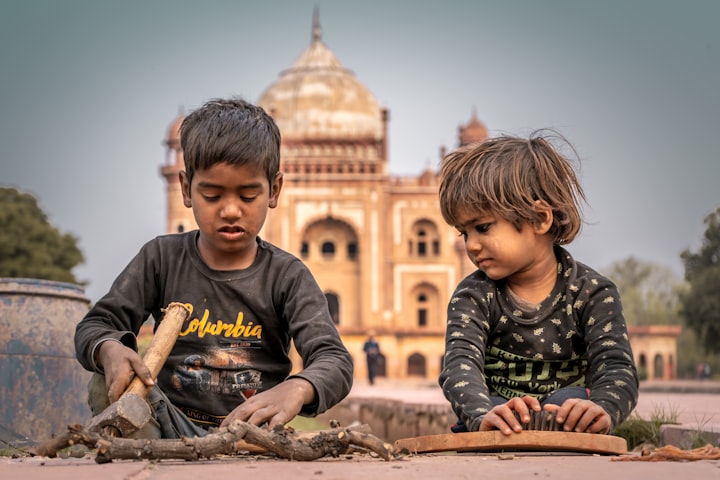Education Still a Challenging Proposition
Money doesn't matter education

Focus on education has tremendously increased over time. It is encouraging to note that nearly 96.5 per cent children are now the school goers. But in the backdrop of this statistics there is a bitter truth: despite the constitutional provision for free and compulsory education for the children between the age group of 6-14 years, quality of education and infrastructure continues to be disappointing. Administrative callousness compounds the problem further. A survey by the "Child Rights and You" (CRY) finds that children continue to be refused admission to schools because of the lack of transfer documentation, birth registration and proof of residence. In some cases, parents of school-going children are compelled to pay fees. Such instances point to a serious bottleneck in the education system of the country. This along with the following facts and figures makes education still a challenging proposition in India:
1) Large Number of Illiterates: India harbours the largest number of illiterates in the world. Presently, nearly 36 crore people are estimated to be illiterate. The number exceeds even the total population of most countries in the world.
(1) Large Number of Illiterates: India harbours the largest number of illiterates in the world. Presently, nearly 36 crore people are estimated to be illiterate. The number exceeds even the total population of most countries in the world.
(2) Inadequate Vocationalisation: Education continues to be largely degree-oriented throwing millions of educated youths down to the corridors of employment exchanges. Vocationalisation of education is still a far cry. As a result, the rate of unemployment among the educated youth is trending up.
In 2011-12, according to NSSO data, the rate of unemployment among graduate youth in rural areas was 19 per cent while that in urban areas is 16 per cent. The situation is more grim in case of female graduates. Nearly, 30 per cent of the female graduates are unemployed.
(3) Gender Bias: There is still a significant gender-bias' in offering opportunities of education to male and female children.
The enrolment ratio is relatively low for the female candidates and their drop-out ratio is considerably high. Education system in India thus needs a substantial change in the attitudes of the people. It is important to promote education among women to improve
their economic independence and social status.(4) Low Rural Access Level: There is a high degree of disparity in access to education. The access level' is considerably low for the rural population compared to the urban population.
(5) Privatisation: There is a growing trend towards privatisation of education. Being very expensive, private education has tended to widen the gulf between access level for the rich and the poor. There is almost a drought of educational opportunities for poorer sections of the society.
(6) Low Government Expenditure on Education: The government has failed to fulfil its commitment of spending nearly 6 per cent of GDP on education: actual expenditure has been around 4-5 per cent only. This points to the gap between what is intended or desired and what is actually achieved.
Given these facts, there follows an obvious inference that education in India has failed to reach the masses, and has also failed to break the vicious circle of illiteracy-illiteracy breeding poverty and poverty breading illiteracy.
Government Expenditure on Education
Expenditure incurred on education can be measured in two ways as percentage of total expenditure of the government and as percentage of GDP. The Education Commission (1964-66) had recommended that to make noticeable growth in educational achievements, the Government of India must spend around 6 per cent of GDP on education. In 1999, the Government of India appointed the Tapas Majumdar Committee, which estimated that the government would need to incur an expenditure of 1.37 lakh crore over a period of 10 years (1998-99 to 2006-07) to bring all the children in the age-group of 6 to 14 years under the education cover.
Compared to the recommended level of expenditure, in recent years, the Indian government has been spending a little over 4 per cent of GDP on education, which has proven to quite inadequate to achieve the educational aspirations of the country. The overall trend in the expenditure incurred on education in India is fluctuating, showing a rise in some years and fall in some others. During 1952-2014, education expenditure as per cent of total expenditure of the government increased from 7.92 per cent to 15.7 per cent, while education expenditure as percentage of GDP increased from 0.64 per cent to 4.13 per cent. In 2016-17, the expenditure on education showed a miniscule increase to 4.38 per cent. (It is important to note that this data pertains only to the expenditure undertaken by the public sector, and not the private sector. If the expenditure incurred by the private sector is considered, the total expenditure on education in Indian economy would be much higher.)
Most of the expenditure undertaken on education goes to elementary education. In 2016-17, elementary education accounted for 49.68 per cent of the total expenditure on education while the share of tertiary education (Colleges and Universities) was 12.74 per cent. However, expenditure per student in tertiary education is higher as compared to that in elementary education. Based on the current trends on expenditure, and the recommendations, it is clear that the Indian government needs to increase expenditure on all levels of education.
The states of India show variation in the expenditure incurred on education. In 2014-15, Himachal Pradesh incurred highest expenditure on education (amounting to 34,651 per capita) while the lowest expenditure was incurred by Bihar (amounting to 4,088 per capita). As a result, great variations are observed in educational opportunities and attainments across the states.






Comments
There are no comments for this story
Be the first to respond and start the conversation.